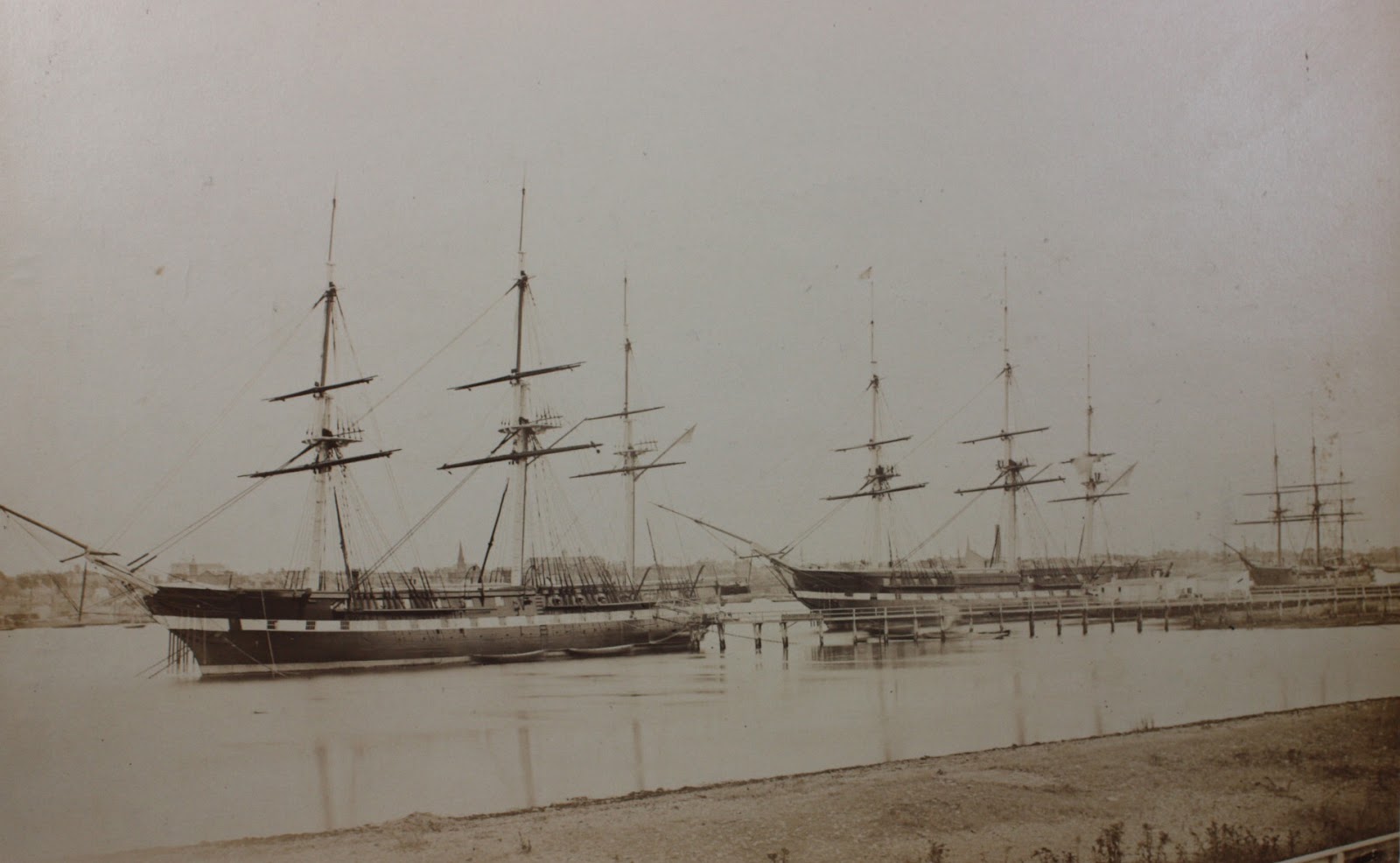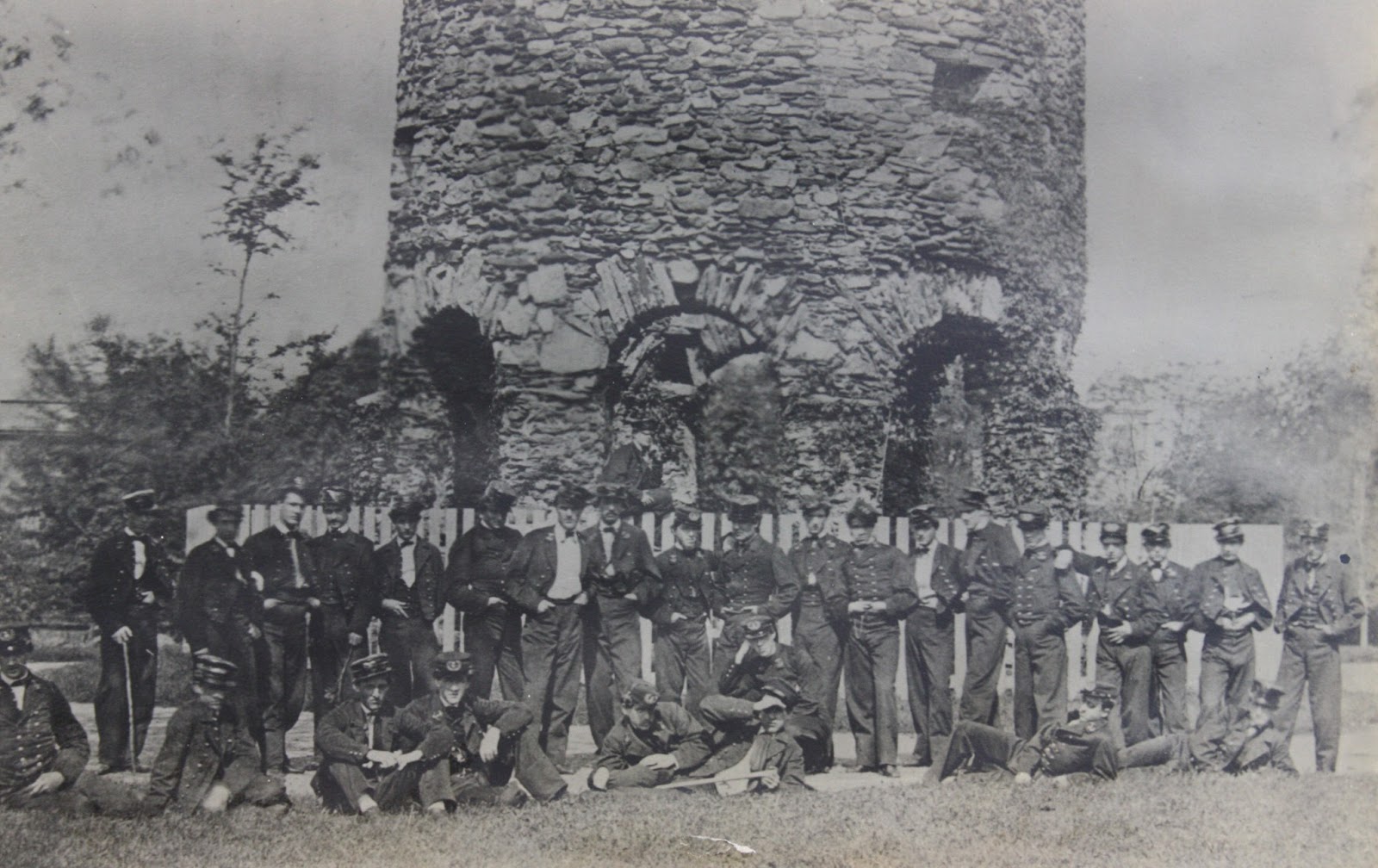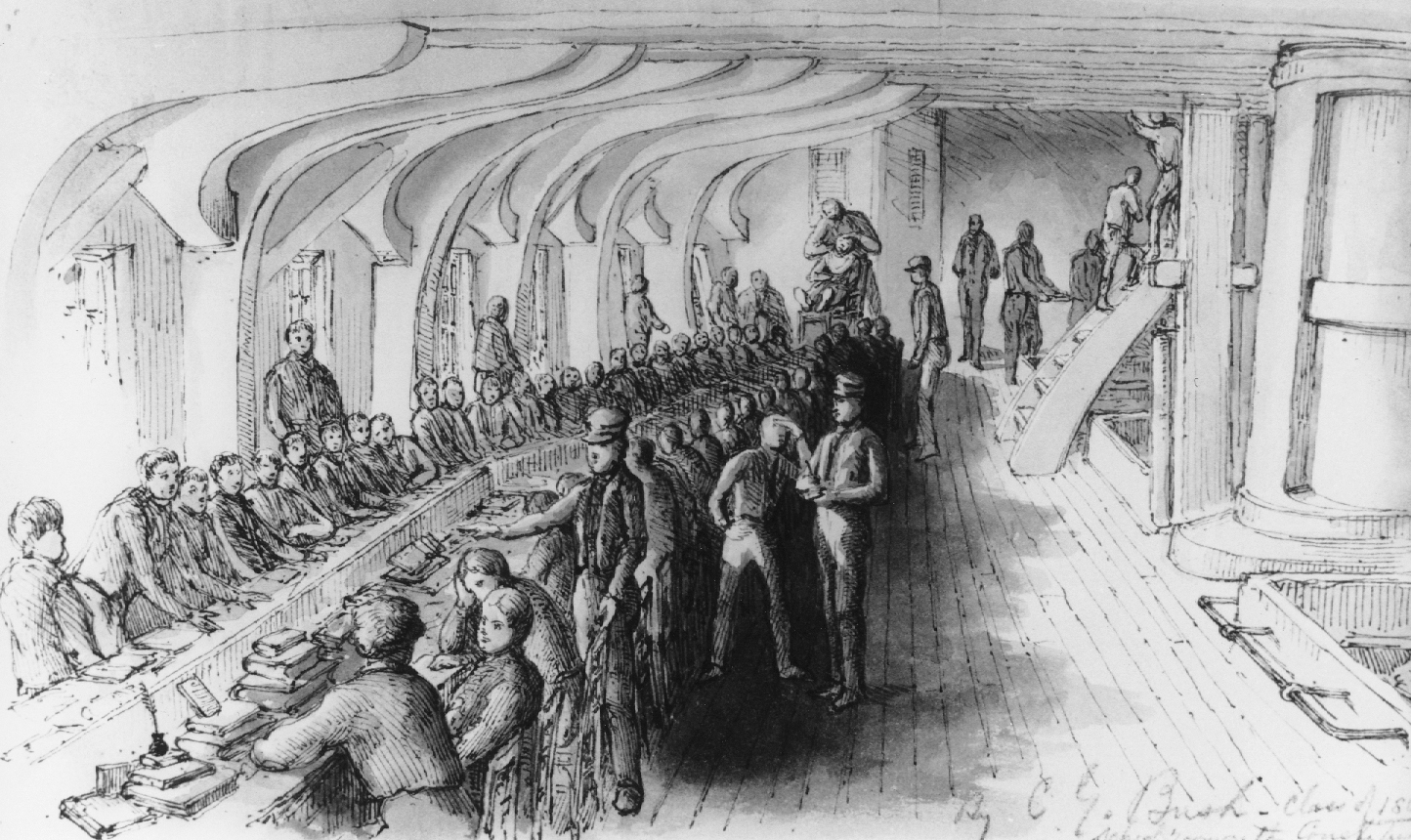Constitution’s role in education is not a new phenomenon. From the time it first set sail, Constitution, like nearly all naval ships at the time, was a training ground for midshipmen — young officers in training. Often joining as teenagers, midshipmen learned the roles of an officer through on-the-job training. It was an education in leadership as well as seamanship and warfighting. They led sections of the crew in gunnery and sailing maneuvers, but also learned to navigate. Many of Constitution’s midshipmen went on to life-long distinguished naval careers.
Each midshipman was responsible for keeping his own journal or version of the ship’s logbook, recording daily activities, weather, as well as the ship’s course, speed and position. Like any student notebook, however, they frequently also included sketches and personal notes. The USS Constitution Museum has several midshipman’s journals in its collection from throughout Constitution’s active sailing period, providing us with a window into the lives of these future officers and often supplementing the official account of the ship’s actions from the deck logbook.
In 1860, following a two-year refit at the Portsmouth Naval Shipyard in Kittery, Maine, Constitution sailed to Annapolis, Maryland, to become a training ship for the U.S. Naval Academy. There, the ship served as a home for the freshman class of students at the academy. The next spring, however, with the outbreak of the American Civil War, the Union Navy grew concerned that Annapolis was too close to the front lines of North and South. Constitution and the Academy’s other training ships, Santee and Macedonian, were taken to Newport, Rhode Island, where the academy was relocated for the duration of the war.






One of the most complex machines of the pre-industrial age, a square-rigged, wooden sailing ship like Constitution is a showcase of lessons in physics and engineering design that still resonate today. At the same time, the reasons for its creation are a window into 19th century global politics and economics, providing relevant context for lessons in today’s world trade and diplomacy.
Today, USS Constitution’s active duty navy crew hosts thousands of school groups on the ship each year. The ship’s crew works hand-in-hand with USS Constitution Museum educators and National Park Service rangers to provide educational programs to students and educators from across the country, touching on nearly every realm of modern curricula from science to social studies. In 2018, nearly 17,000 students in school groups visited USS Constitution and the USS Constitution Museum. In addition to learning about the history of the ship and its role in American history, the students had the opportunity to use the ship as a real-life example to explore topics ranging from the physics of ship design to the economics of world trade. In recent years, educators from around New England have been invited on special harbor cruises on USS Constitution to commemorate Constitution’s lifelong role in education.
The Author(s)
Carl Herzog
Public Historian, USS Constitution Museum
Carl Herzog is the Public Historian at the USS Constitution Museum.
